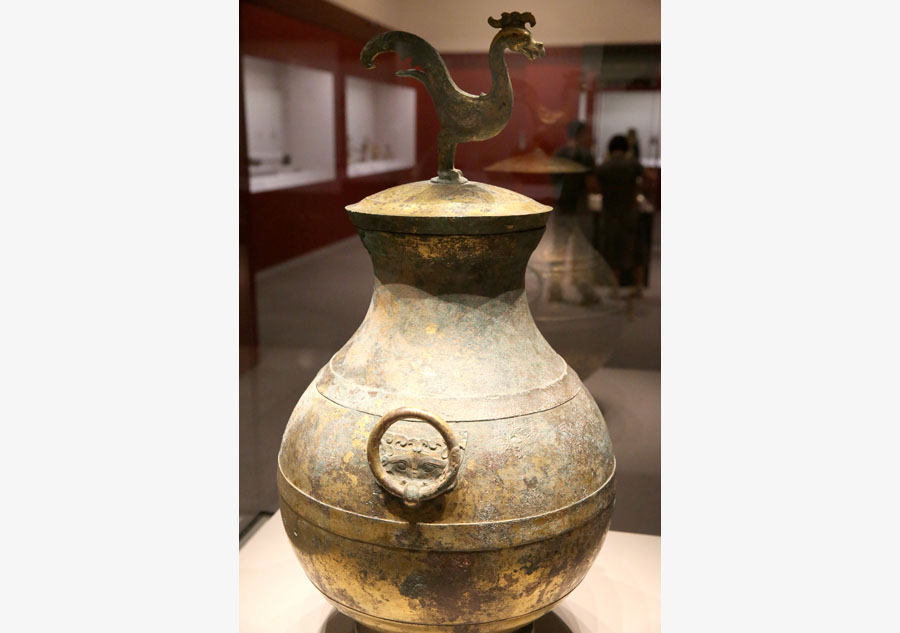 |
|
Gilt bronze vessel with a phoenix on top. [Photo provided to China Daily] |
One example is a phoenix-shaped bronze lamp. The beak of the mythical bird, which is glancing backward, flares up to form the lamp shade, directly above the oil tray embedded in its back. When the lamp oil is lit up, the smoke carries into the shade, entering the bird's long neck and from there is channeled into its chest. "The chest, filled with water, served as a cooling chamber for the smoke," Shan says.
The wine retriever, built on the siphon principle, is another example of combining beautiful design and clever engineering, and one to illustrate how far imagination could guide a Han craftsman.
"Unlike in following eras in which an aesthetic mode gradually formed that could prove restrictive in many cases, the Han Dynasty was a period marked by unbridled imagination," Shan says. "Meanwhile, this free-flowing imagination went hand in hand with a solid and sober use of color that could only be described as regal."
One common combination is gold and bronze (as in metalware). Another is black and red (as in lacquerware). The latter coupling has in fact inspired Shan to wrap the entire show in "Chinese red" as appears in the interior of the lacquer vessels and plates on display.
"The craft of creating gold patterns on a bronze surface - sometimes silver is added to great effect - came into being with the widespread use of bronzeware," Shan says. "Later, when the use of bronze declined, the craft went down with it, before gradually slipping into oblivion. In the years that followed, the subtlety enabled by the use of contrasting colors was to completely give way to the unabashed glare of gold."